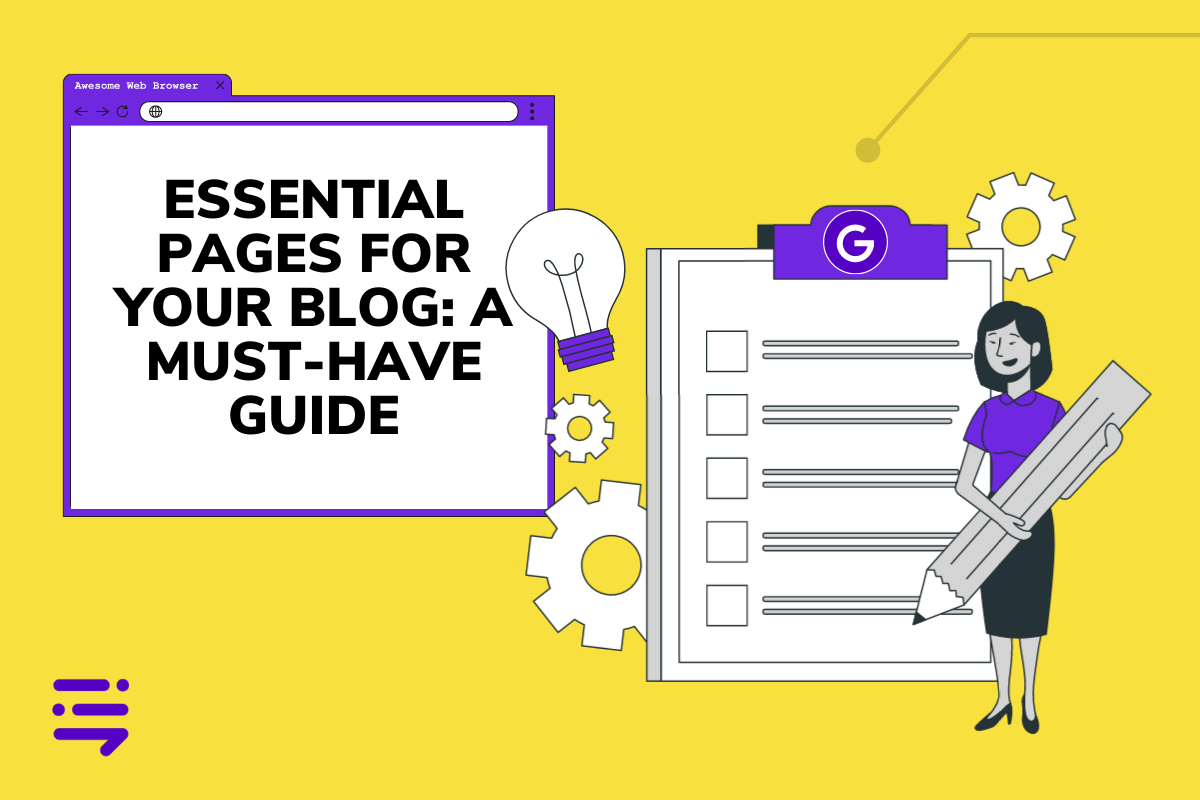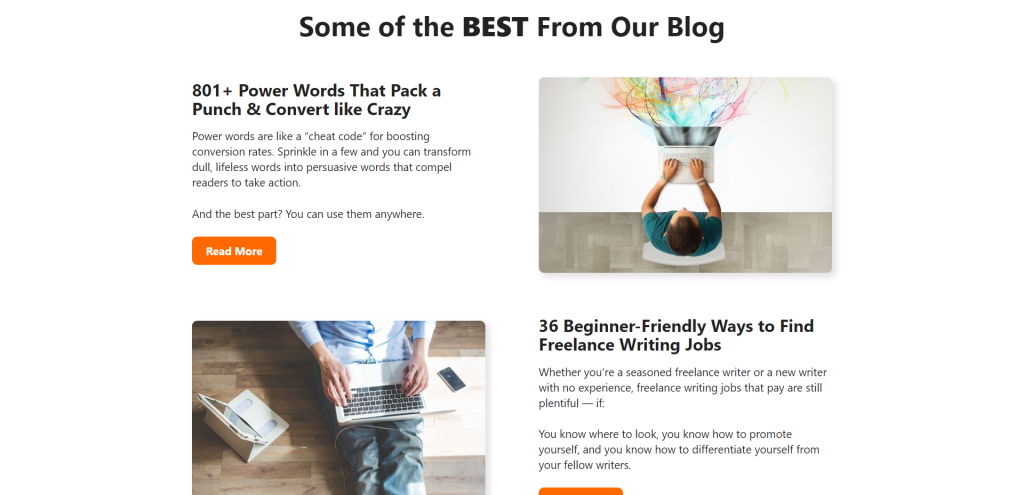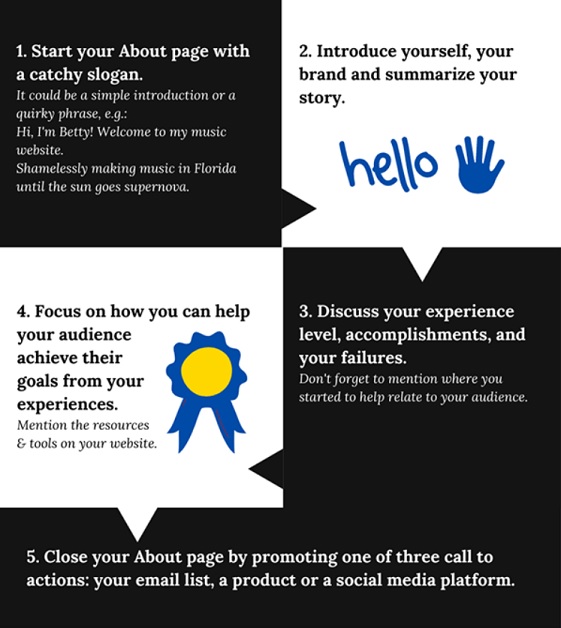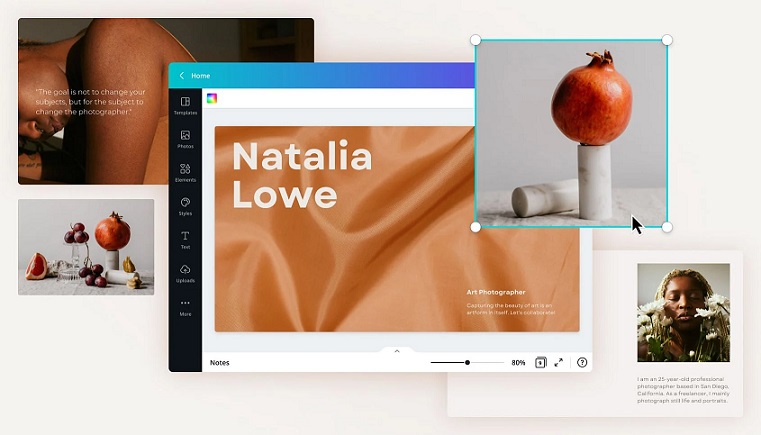Discover top guides, trends, tips and expertise from AIO Writers
Essential Pages for Your Blog: A Must-Have Guide
Julia McCoy
Tuesday, 25th Apr 2023
Whether you are running a blog, a corporate website, or an e-commerce store, there are key pages you must include to improve user experience and SEO ranking.
Among them are the About page and Contact page — two of the most important pages that customers are looking for in a website.
In this article, you will learn five key web pages that should be included in every blog. With well-written blog pages, you can ensure that both users and search engines can easily understand the purpose of your site.
So, let’s explore these essential pages for your blog and how each one contributes to building an effective online presence.
Table of Contents
What Are Blog Pages?
Blog pages are the static content of a website that remains relatively unchanged. They provide information about the blog, its purpose, and how to contact or find out more about the author.
Unlike blog posts, which are published regularly with fresh content, blog pages typically stay in place for long periods of time.
- The About page is one of the most important blog pages as it provides readers with an introduction to who you are and what your blog is all about. This page should include some background information on yourself or your business and why you started blogging in the first place. It’s also a great opportunity to share any awards or recognition that you have received as well as any professional affiliations that may be relevant.
- The Contact page allows visitors to easily get in touch with you via email, phone number, and social media.
- The Portfolio page showcases samples of past projects so potential clients can see what kind of quality they can expect from working with you.
- Finally, having a Privacy Policy page is essential these days due to data protection laws such as General Data Protection Regulation (GDPR). This type of policy outlines how you will use customer data that is collected through forms.
Every blog should have these essential pages to ensure a successful and effective online presence. Let’s discuss each page in-depth and learn how to compose each section for your blog.

The most important elements of a website, according to a HubSpot survey.
5 Essential Pages for Your Blog
1. Home Page
The home page of a blog is the first page visitors will see when they arrive. The home page should communicate what your blog is all about and entice readers to explore the rest of the content on your site.
You can write a short bio at the top of the page, telling readers who you are, what you do, and why they should find your content important. Through this introduction, visitors will be able to quickly decide if your content is pertinent to them before they even go to your blog posts.
At the top of the home page is a navigation menu where you provide links to all other pages on your blog such as About, Contact, and Portfolio. Organize your navigation menu to allow readers to quickly locate topics that interest them without having to scroll through multiple posts.
You can add social media buttons so users can easily share posts directly from the home page.
A featured post section is an excellent way to highlight your most popular or recent work and encourage readers to further explore related topics within your niche. This gives new visitors an instant snapshot into what kind of content they’ll find while also providing existing followers with quick access to recently posted articles that might interest them.

Smartblogger’s home page includes a selection of their best blog posts.
Home pages are the key to getting readers hooked so make sure you make a great first impression through a well-written and well-designed home page.
2. About Page
For 85% of consumers, trust is important when choosing a brand. And you can establish trust and credibility with a well-written About page.
Tell people who you are and why your work matters. Mention any relevant qualifications or experiences to demonstrate your knowledge and expertise in your field.
For example, if you write about finance, mention any financial certifications or degrees that you have obtained. If not applicable, list other experiences such as previous positions held or accomplishments in relevant fields.
Another way to build trust with readers is by discussing how long you’ve been blogging and what inspired you to start writing in the first place. Share stories from past successes and explain how those experiences motivated you to create content.
After a brief description of what drives your content creation, end with a call-to-action (CTA) that encourages visitors to sign up for email updates or subscribe to an RSS feed.
Don’t forget to include social media buttons that link to your profiles on Twitter, Facebook, and LinkedIn. This allows new followers to find out more about you and how you engage with your audience.
Your About Page should be a reflection of who you are and what your blog stands for. It is an essential page to create trust with readers, so make sure it’s comprehensive yet concise.

5 tips on writing an About page from the Blogging Wizard
3. Contact Page
A contact page is one of the essential pages for your blog because it allows readers to reach out if they have questions or opinions regarding your content or offers. By having a well-designed contact page, you demonstrate your openness to feedback and willingness to engage with readers.
What should you include on your Contact page?
First, provide the reader with multiple ways to reach out. Offer multiple access points such as phone numbers, email addresses, and links to Twitter and Facebook, plus a form for submission of queries during off-hours. The contact form makes it easier for people to send inquiries instead of searching for contact details.
Use language that is straightforward and easy to comprehend. Some users may not be familiar with certain terms or phrases related to communication like DM or tweet, so keep it simple.
For those who may have security concerns when submitting personal data, make sure to include any relevant disclaimers regarding privacy policies. This will go a long way in allaying fears over the unauthorized use of personal information.
With clear language, multiple contact methods, and appropriate safeguards in place, your contact page should serve as an effective bridge between you and your readers.
4. Portfolio Page
A portfolio page provides a glimpse into the quality of content you produce. This can be incredibly beneficial when trying to attract potential customers, partners, or employers.
When creating a portfolio page, highlight the best examples of your work. For example, if you’re a graphic designer who specializes in logo design, then showcasing some of your best logos would be ideal for your portfolio page. If you’re a freelance writer who specializes in SEO articles, then featuring samples of those pieces should be front and center.
Update your portfolio page regularly to keep it interesting. You may want to add new projects or highlight certain pieces based on what’s popular in the industry at the moment. This way, viewers get to see something new every time they visit your blog.
In addition to displaying work samples on your portfolio page, it can also be helpful to provide brief descriptions about each project along with links back to where they were originally published (if applicable). Doing this helps give viewers more context around each piece while also providing them with additional resources if they want more information.

Canva is one of the best free portfolio website builders around.
5. Privacy Policy Page
A privacy policy page outlines the way your blog collects, uses, stores, and protects personal data collected from visitors. This helps build trust with your readers as they know their information is safe with you.
When crafting a privacy policy page, be open about the data collected and how it will be utilized. State the purpose of collecting data and how long it will be kept.
For example, if you have an email newsletter sign-up form on your blog, make sure that users understand that their email address will be added to a mailing list and used solely for promotional purposes such as sending newsletters or special offers.
Visitors should have the option to opt out of data collection at any time, and measures to protect their stored information must be detailed in the policy.
Make sure that all third-party services (such as payment processors) are compliant with GDPR regulations too. This way users can feel confident that their private information won’t fall into the wrong hands.
FAQs – Essential Pages for Your Blog
What pages should I have for my blog?
The most essential pages for your blog include a homepage, an About page, a contact information page, an archive of posts listed by date and/or category, and a site map.
It is recommended to have pages dedicated to each topic or product you are offering. This allows for easier navigation for readers and helps with SEO optimization due to the increased keyword density on specific topics.
Lastly, it is important to include social media links in order for visitors to easily share content across multiple platforms.
Where can I find articles for my blog?
There are numerous sources to find articles for your blog. One of the most popular is through content curation websites such as Buzzsumo, Alltop, and Paper.li which aggregate relevant content from around the web.
Many blogs also offer RSS feeds that can be easily added to a reader or aggregator in order to stay updated on new posts on topics you’re interested in.
Finally, social media sites like Twitter and LinkedIn are excellent resources for discovering fresh content ideas based on what others in your industry are talking about.
Include These Essential Pages for Your Blog to Build Trust and Authority
This guide summarizes the essential pages for your blog that help establish yourself as an authority in your niche. Each page serves its purpose and can help you attract more visitors, build trust, and provide information about your services or products.
By taking the time to create quality content for all of these essential pages for your blog, you’ll be able to reach new heights in success.

UNLOCK YOUR POTENTIAL
Long Headline that highlights Value Proposition of Lead Magnet
Grab a front row seat to our video masterclasses, interviews, case studies, tutorials, and guides.


